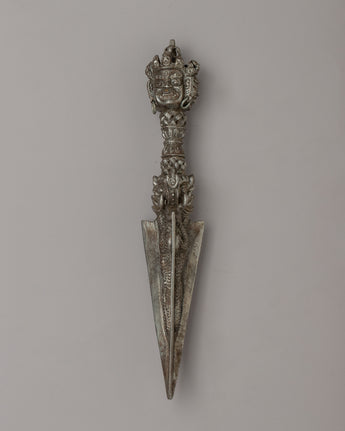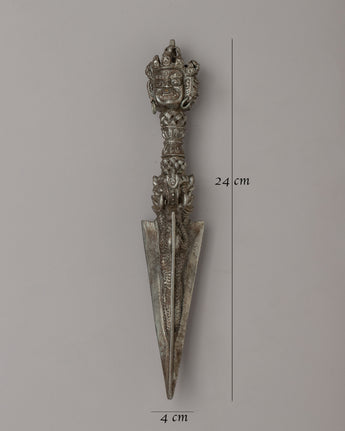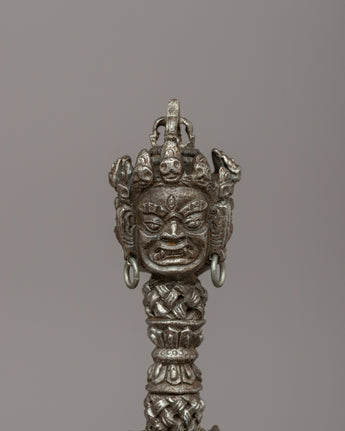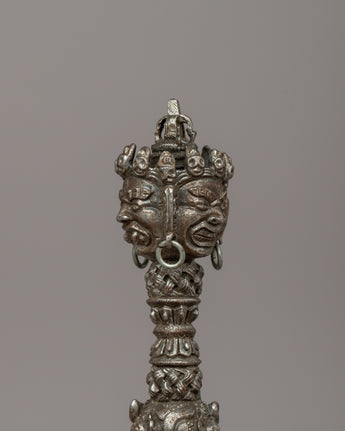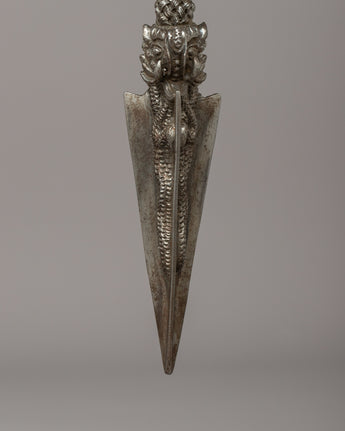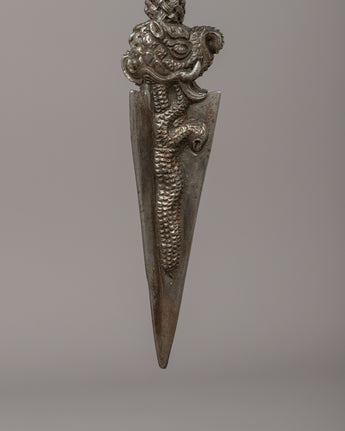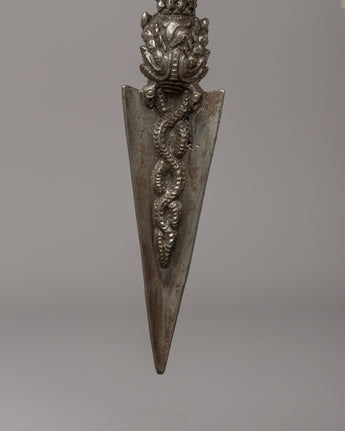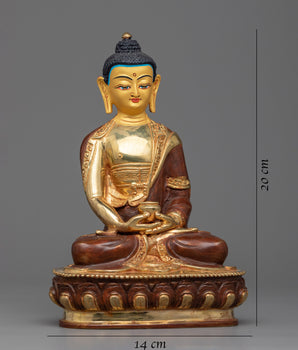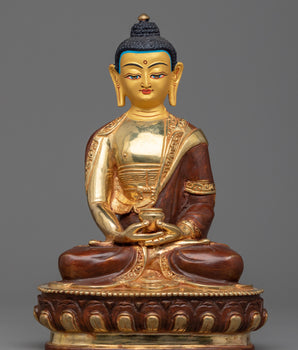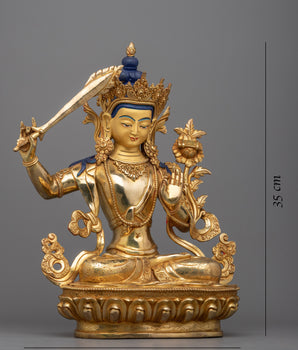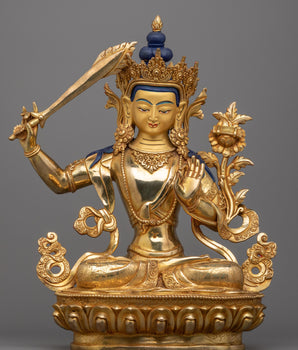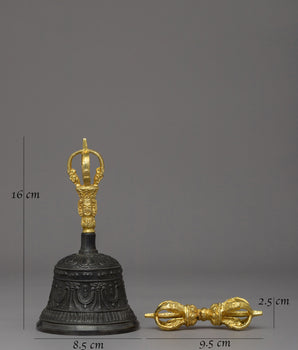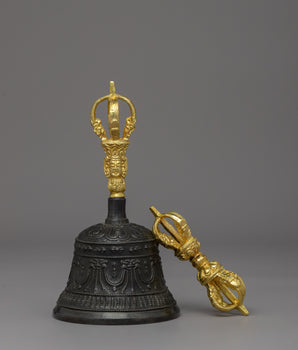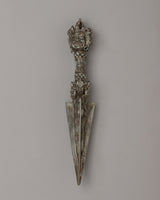
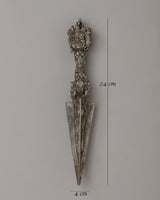
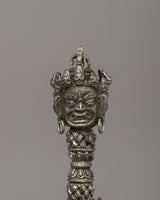
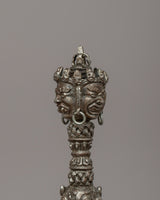
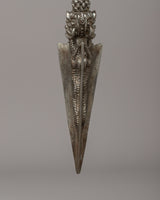

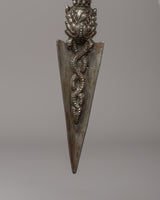
Tibetan Phurba for Rituals | A Powerful Ritual Dagger for Protection

100% AUTHENTIC

HANDMADE

FREE SHIPPING
Handcrafted Iron Vajrakilaya Dagger Phurba for Rituals
--------------------------------------------
Size: 24 cm(Height) x 4 cm(Width)
Weight: 0.450kg
Materials: Iron
--------------------------------------------
About The Ritual Item :
The Phurba for rituals stands 24 cm tall and weighs 0.450 kg, is made from iron, and is a potent spiritual tool. At the top of the phurba, a deity’s head is intricately carved with three eyes and a wrathful expression, symbolizing strength and the ability to overcome challenges. The deity wears a five-skull crown, emphasizing its protective and fierce nature. A makara, a face associated with guarding against evil, is carved in the middle, adding to the phurba’s spiritual significance. On each side, snake motifs are depicted, symbolizing transformation, protection, and hidden knowledge, reinforcing the mystical properties of the dagger.
The design of this phurba is not only aesthetically intricate but also deeply symbolic, with the wrathful deity head, makara, and snake carvings making it an essential item for rituals and spiritual practices. It is used for spiritual protection and is believed to invoke the power to break through negative energies. The craftsmanship highlights the ritual importance of the phurba as a tool of transformation, guarding sacred spaces and helping to release obstacles in spiritual journeys. With its detailed symbolism, the phurba is a potent object deeply connected to the spiritual energies invoked during ceremonies.
Introduction To The Phurba
The ceremonial dagger (Sanskrit: Kila; Tibetan: phurba) is important for the expelling of evil and is thought to be especially effective in neutralizing the forces that obstruct Tantric Buddhist practice. It has ancient origins, first appearing in the Indian Rg Veda as the core blade of the vajra used by Indra to destroy the primordial cosmic snake Vritra. Kila, which means peg or stake in Sanskrit, was most likely associated with Vedic sacrifices. Meditation on the Vajrakila Tantra, an early Indian scripture first promoted in Tibet in the eighth century by Padmasambhava, one of the founding teachers of Tibetan Buddhism, is used to invoke the three-headed Vajrakila Buddha.
How to set up your own Buddhist Shrine?
Find a clean, quiet, and uncluttered spot
Set up an altar table, and cover it with an altar cloth that calls to you
Place your sacred item (statue, thangka, or a picture of Buddha) at the center


